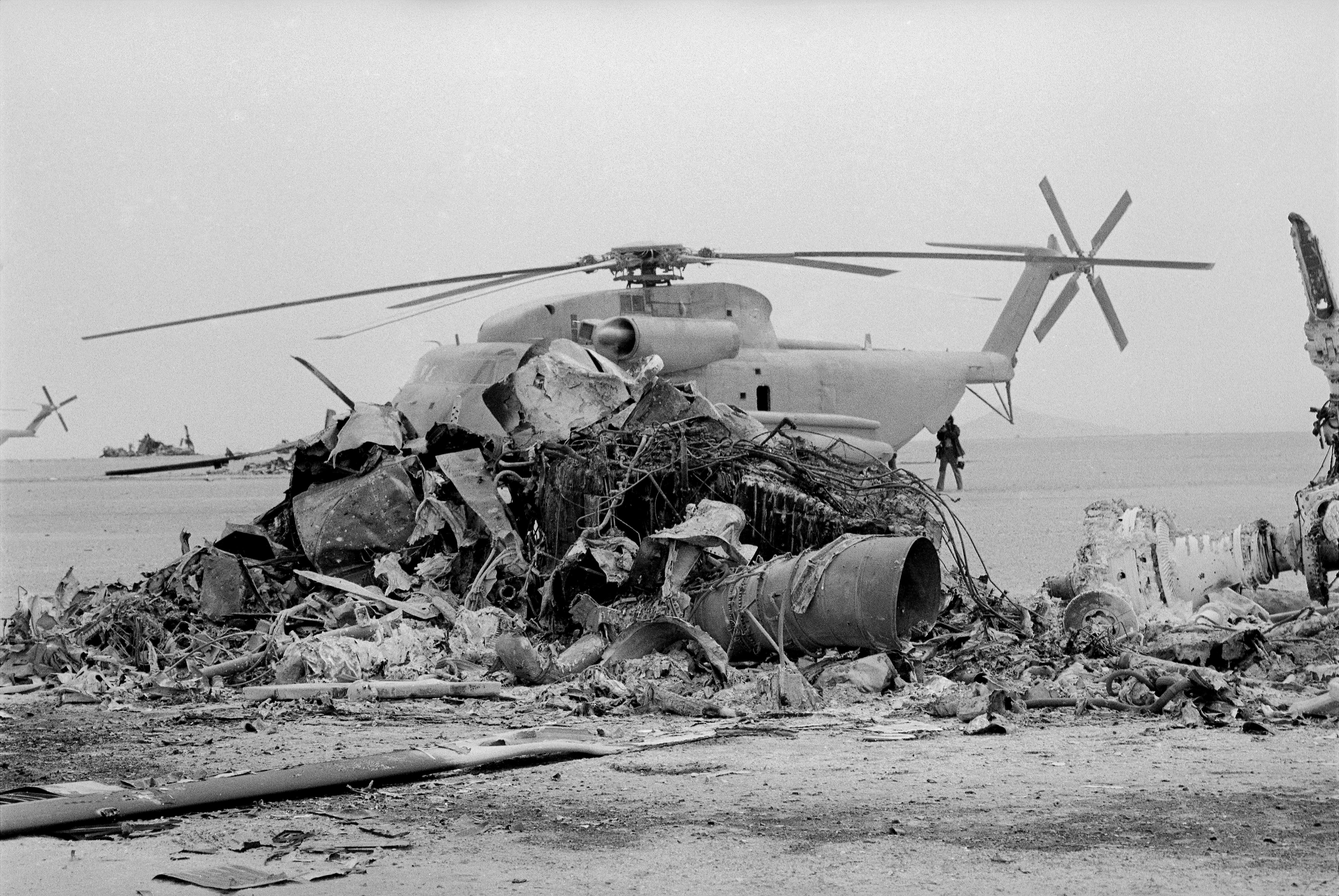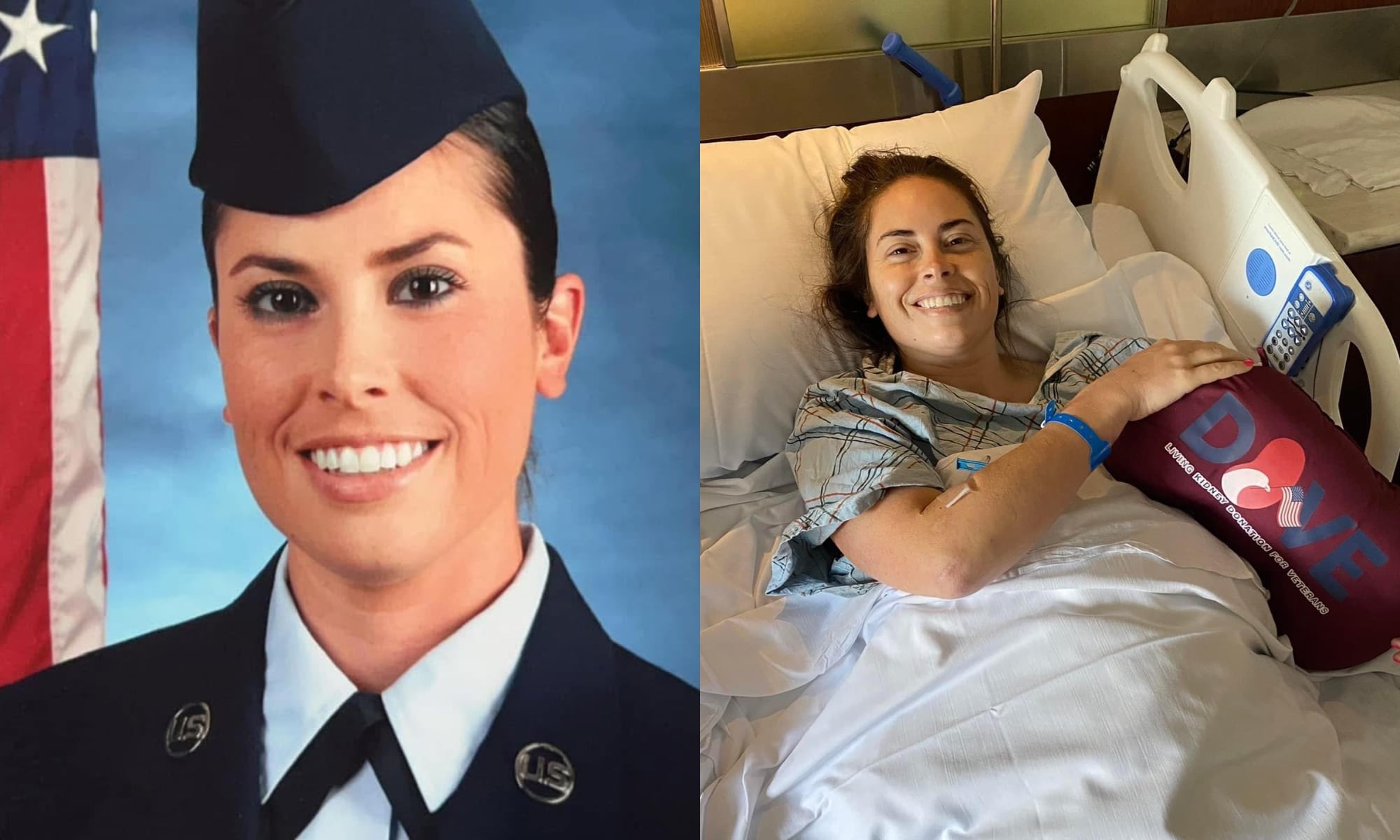Nineteen-year-old Sgt. Kevin Hermening had never heard of Iran when he learned he was headed to the U.S. Embassy in Tehran as a Marine Security Guard in 1979.
Originally anticipating an assignment to the U.S. Embassy in Germany, Hermening visited the library to learn more about his new destination.
“I thought a little bit to myself, ‘Wow, I’m going into a dangerous place but I’ve been trained, I’m a Marine, I’m a young guy,’” Hermening told Military Times. “You don’t get trained to four months later get captured and held for 444 days.”
On Nov. 4, 1979, Hermening was at the U.S. Embassy in Tehran when Iranian protesters stormed the building and seized him and nearly 100 others in what is known as the Iranian hostage crisis.
In an attempt to rescue 52 American hostages, then-President Jimmy Carter approved a covert mission involving elements from the Navy, Army, Air Force and Marines.
But the operation — dubbed Operation Eagle Claw — was unsuccessful and aborted.
Now, an upcoming documentary directed by Oscar-winning filmmaker Barbara Kopple is examining each step of the mission with commentary from Hermening and other hostages, Iranian hostage-takers, service members who participated in Operation Eagle Claw, Carter and other administration officials.
“Desert One” also includes satellite phone recordings of Carter speaking with military leaders during the mission that have never been released until now.
“It finally tells the story from a lot of aspects,” retired Air Force Chief Master Sgt. Richard “Taco” Sanchez told Military Times. “I think people can look at it and go, ‘Now I better understand.’ Because there was many years afterwards that we couldn’t say nothing.”
“There’s things that we who flew the operation didn’t know until I saw the movie, of what Carter was doing and such,” said Sanchez, who was then a staff sergeant assigned to the 8th Special Operations Squadron.
The mission required a minimum of six operational helicopters. But to be safe, two more were added. A total of eight Navy RH-53D helicopters would launch from the aircraft carrier Nimitz, which was positioned in the Arabian Sea.
The helicopters would then rendezvous with six C-130 aircraft from Oman at a salt flat called Desert One approximately 200 miles from Tehran.
From there, rescue teams would board the helicopters and travel to a mountain location just outside of Tehran before quietly driving to the Embassy in trucks, retired Army Lt. Gen. William “Jerry” Boykin — then a major and Delta Force member ― recounted in the film.
The objective, Boykin said, was to locate the hostages and take them to a nearby soccer field, where they would connect with the helicopters and evacuate.
“The helicopters would land in the soccer stadium next door,” Boykin said. “We’d blow a hole in the wall of the Embassy, get those hostages. Go into the soccer stadium, load them up, and we would all take off.”
“So that was the plan,” he said.
Although those selected to train for the mission suspected there was some correlation to the hostage crisis, it wasn’t until April 23, 1980, that then-Maj. Gen. James Vaught confirmed the goal was to bring the American hostages back to the U.S.
“When Vaught said that ― you talk about American pride, it was off the chain,” Sanchez said. “Everybody knew we had one mission and we were going to make it happen.”
On April 24, they were given the green light.
“President Carter came over the satellite radio and said, ‘It’s a go. Godspeed and bring the hostages home.’ That was your last and final pep talk before we took off,” Sanchez said.
The film then details how the mission went awry, using animation to illustrate various mishaps at Desert One. First, mechanical problems plagued one of the helicopters, and then another encountered a dust storm, preventing them both from arriving at Desert One.
That meant the mission was down to six helicopters ― a number still considered adequate for operational success.
But when another helo suffered a hydraulic problem the mission was aborted, and plans to attempt it once more the following day were penciled in.
As one of the helicopters repositioned itself for refueling, however, a “brown out” from swirling sand caused the helicopter to veer off course and crash into a C-130 aircraft.
A total of eight U.S. service members died.
“It wasn’t until all the airplanes got on the ground in Oman that we actually knew which crew was lost, and who in the crew,” Sanchez said. “We had to do a headcount, which is the toughest headcount you’ll ever do in your life.
“You sit down and then it hits you: we failed. We left 52 American hostages in Iran, and eight of our brothers.”
Three Marines were lost during the mission: Sgt. John D. Harvey, Cpl. George N. Holmes, Jr., and Staff Sgt. Dewey L. Johnson. So were five airmen: Capt. Richard L. Bakke, Capt. Harold L. Lewis, Tech. Sgt. Joel C. Mayo, Capt. Lynn D. McIntosh, and Capt. Charles T. McMillan II.
One of the film’s most gruesome aspects includes the imagery of charred bodies at the scene of the accident.
“I didn’t like the bodies,” Sanchez said. “That’s a tough piece for me because I know each one of them.”
Although Kopple acknowledged the unsettling nature of the scene, she stands by her decision to include it in the film.
“If you don’t see it, you don’t feel it, you let it go,” Kopple told Military Times. “We can’t sanitize what’s happened. People have to know the harsh, raw truth in order to understand how important it is for the people who were willing to sacrifice their lives for what they believed in.”
Despite the tragedy, Operation Eagle Claw was the impetus for several critical changes across special operations, including paving the way for the creation of U.S. Special Operations Command in 1987.
“Out of the ashes came the phoenix,” Sanchez said. “I could tell you unequivocally, there’s no doubt in anybody’s mind that was on that mission ― had we succeeded, there would be no special operations ... nothing that we see today.”
RELATED

Additionally, the survivors of the mission vowed to support the 17 children who lost their fathers during Eagle Claw, an initiative that led to the birth of the Special Operations Warrior Foundation, which has since funded the education of nearly 900 American children who have lost parents assigned to SOCOM.
The operation also served as measure of hope for the hostages, who learned about the attempted mission two months after the fact, Hermening said, when a sports newspaper given to the captives included a letter-to-the-editor referencing those who died in the rescue attempt.
“There was more than just a little bit of an element of success in the area of this rescue mission,” Hermening said. “And that was the fact that when we learned that they had tried despite the tragedy in the desert...that gave us the hope, allowed us to withstand another eight months.”
Despite the more than 50,000 “Welcome Home” letters Hermening received labeling the hostages “heroes,” he still doesn’t view it that way.
“We weren’t heroes, we were just victims of circumstances,” Hermening said.
“We were there doing our job, and we got caught up in a bad situation. ... There were heroes in the hostage crisis, and they were the eight men whose bodies were left behind.”
“Desert One” is scheduled for an Aug. 21 release in more than 100 theaters across the U.S. An on-demand digital release is also slated for Sept. 4 on various platforms, including Apple TV+, Amazon, Google Play, YouTube and more.
Check the schedule to see if the film is playing in a theater near you.
Tags:
Desert OneOperation Eagle ClawDelta ForcesSpecial Operations CommandIranian hostage crisisiran hostage crisis documentarymilitary documentariesIn Other News















